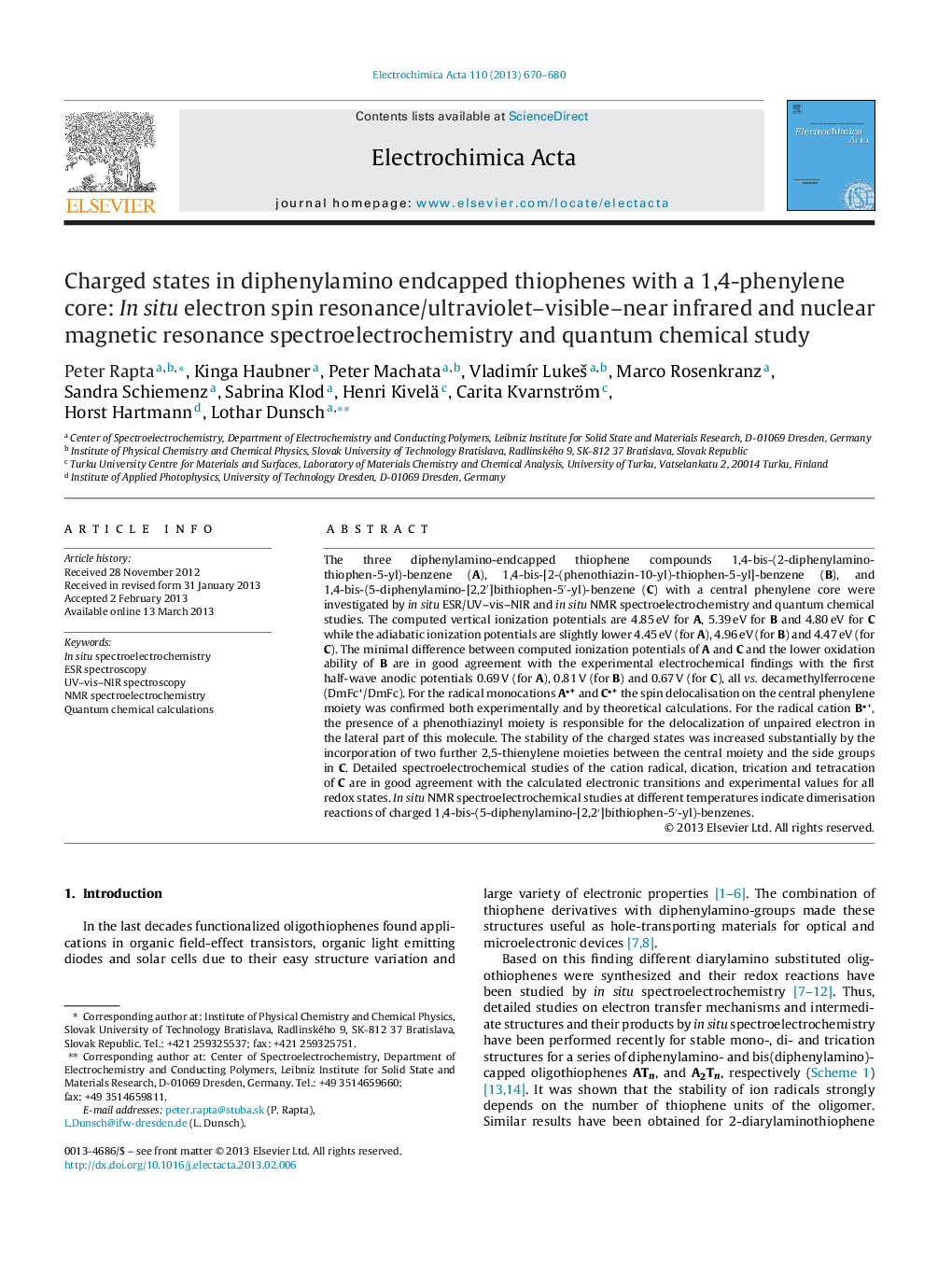| Article ID | Journal | Published Year | Pages | File Type |
|---|---|---|---|---|
| 6615797 | Electrochimica Acta | 2013 | 11 Pages |
Abstract
The 1,4-bis-(2-diphenylamino-thiophen-5-yl)-benzene (A), 1,4-bis-[2-(phenothiazin-10-yl)-thiophen-5-yl]-benzene (B) and 1,4-bis-(5-diphenylamino-[2,2â²]bithiophen-5â²-)-benzene (C) compounds consisting of three different components, namely the diphenylamino-, bithiophene- and central phenylene moiety, respectively, were studied spectroelectrochemically and theoretically in detail to get insights into the electron transfer mechanism and the stability of the formed charged states within such composite Ï-conjugated structures.
Keywords
Related Topics
Physical Sciences and Engineering
Chemical Engineering
Chemical Engineering (General)
Authors
Peter Rapta, Kinga Haubner, Peter Machata, VladimÃr LukeÅ¡, Marco Rosenkranz, Sandra Schiemenz, Sabrina Klod, Henri Kivelä, Carita Kvarnström, Horst Hartmann, Lothar Dunsch,
